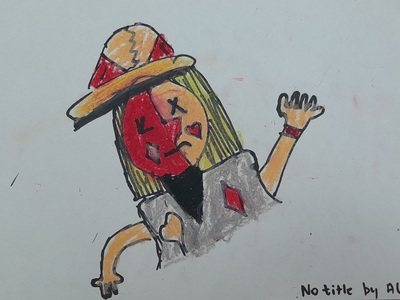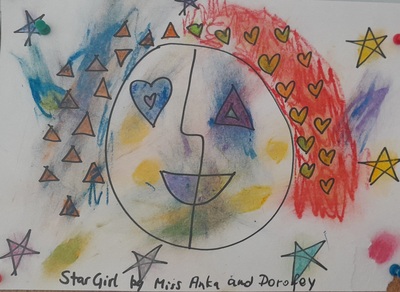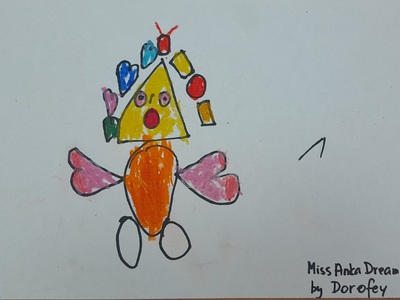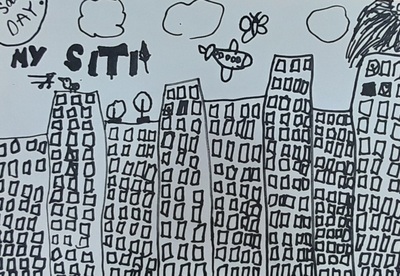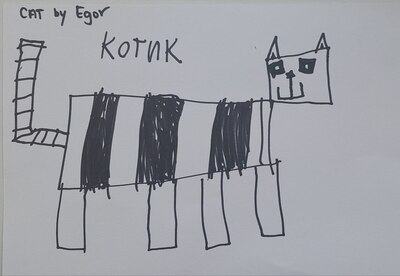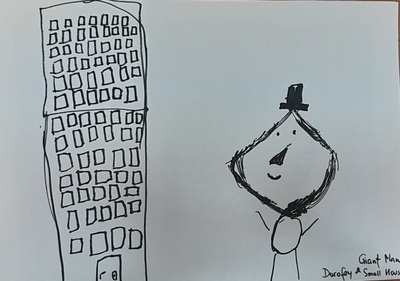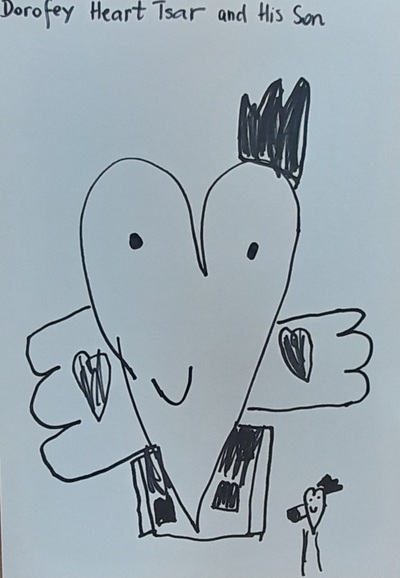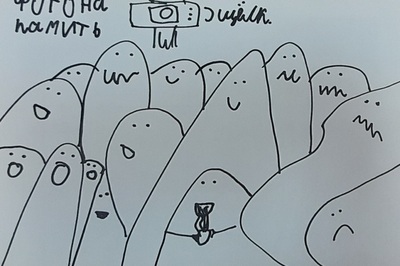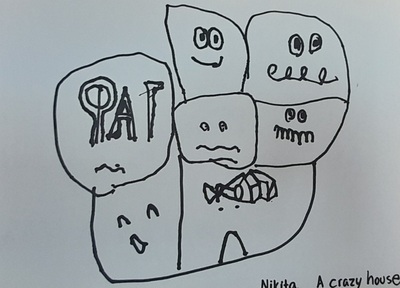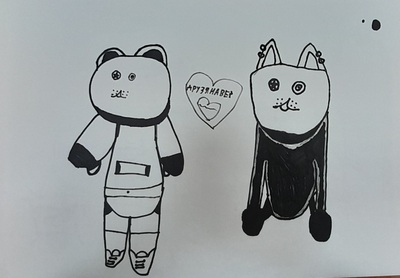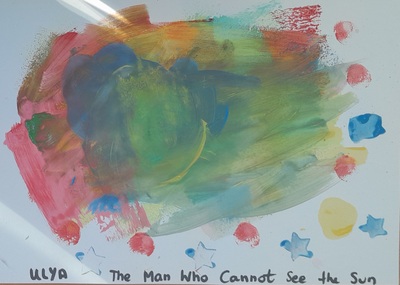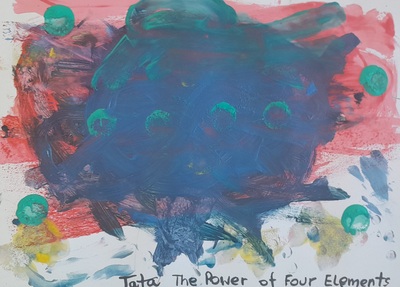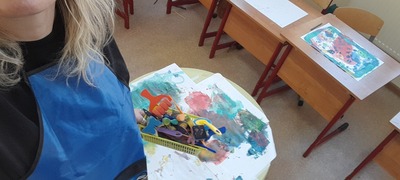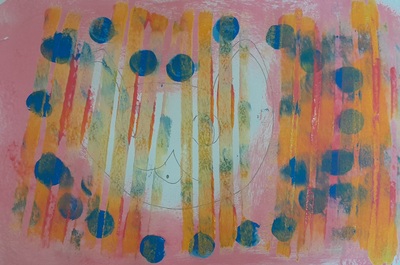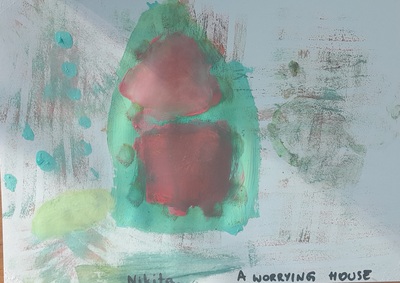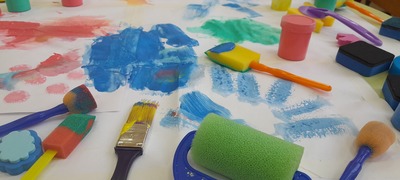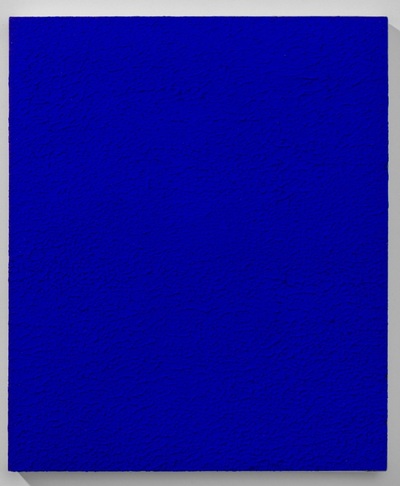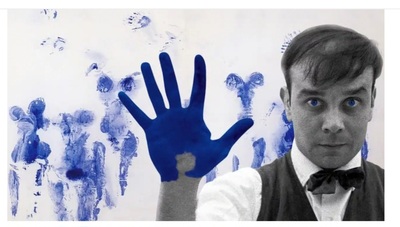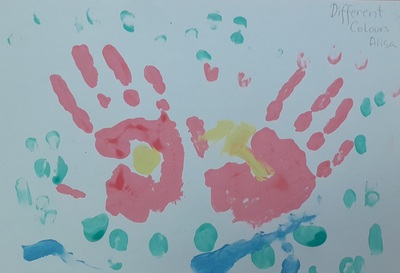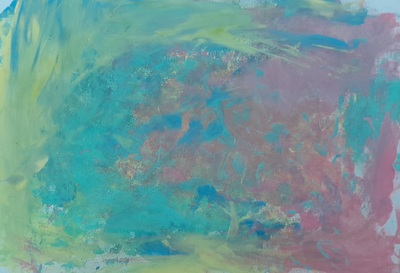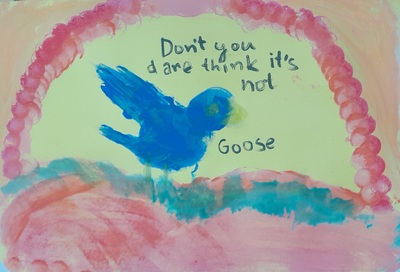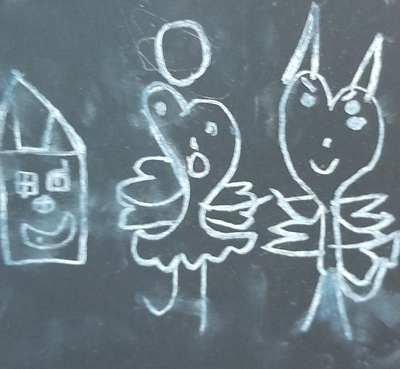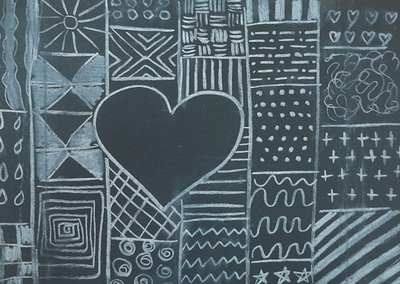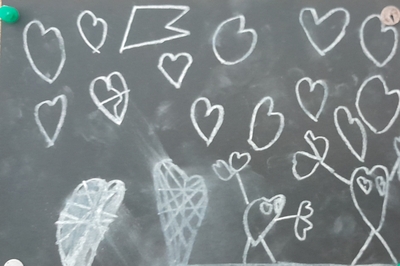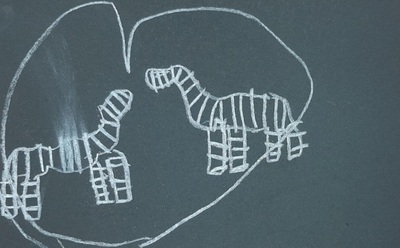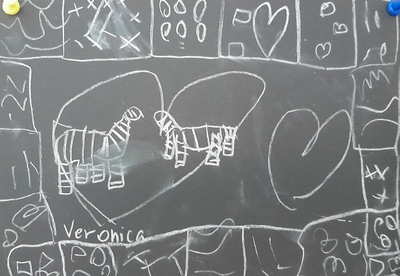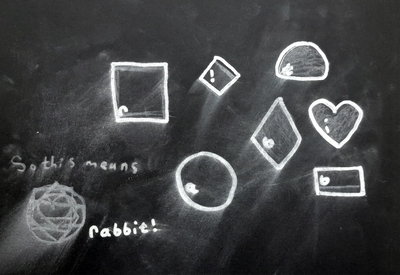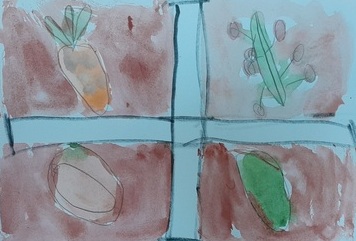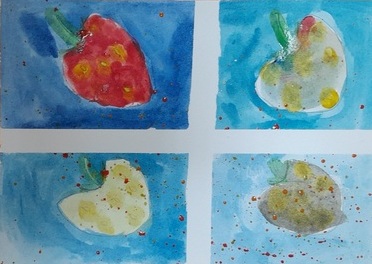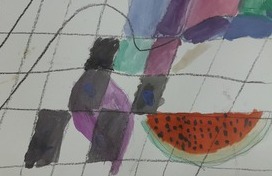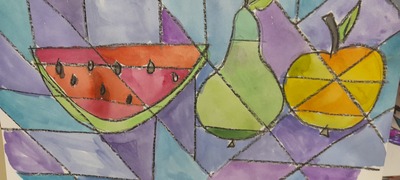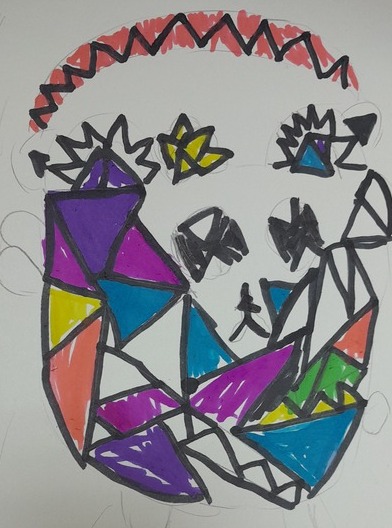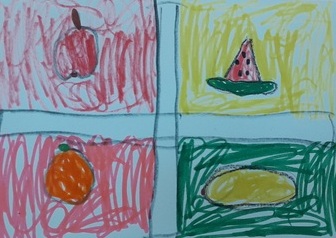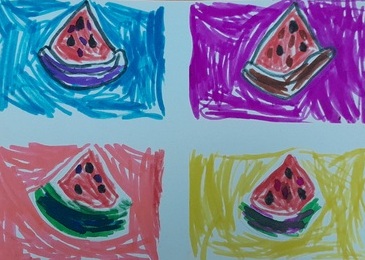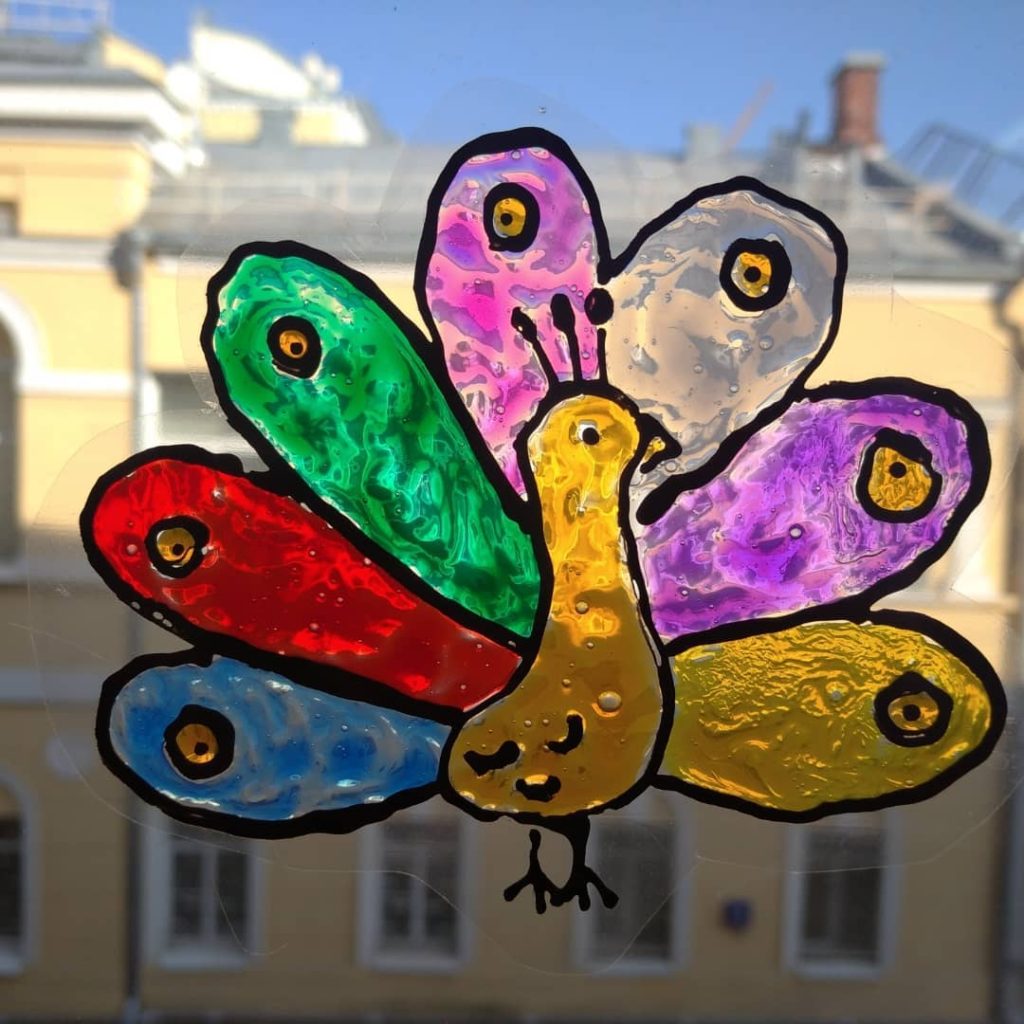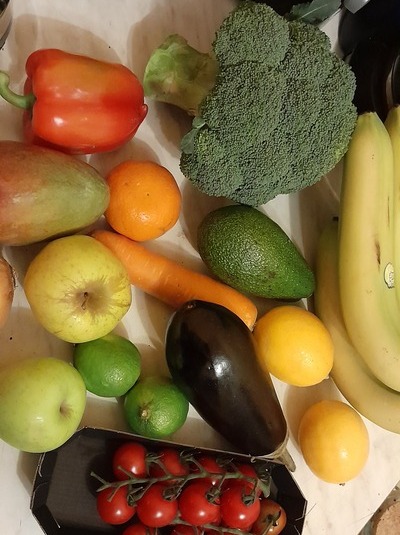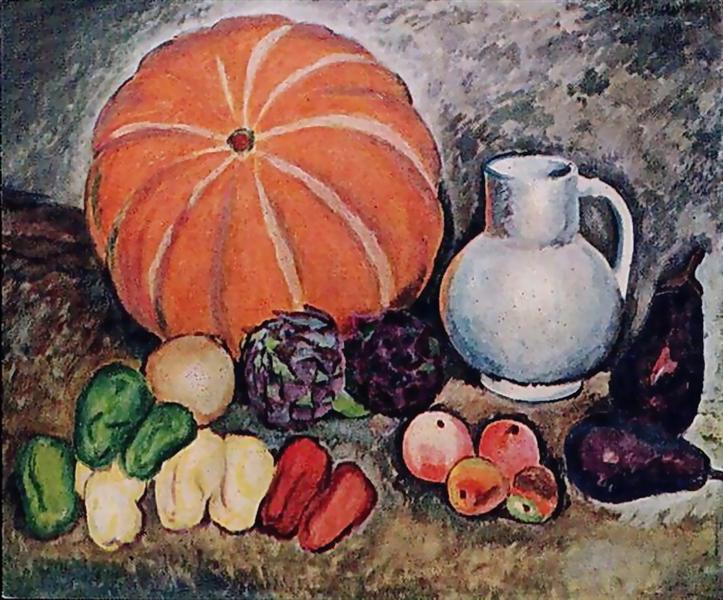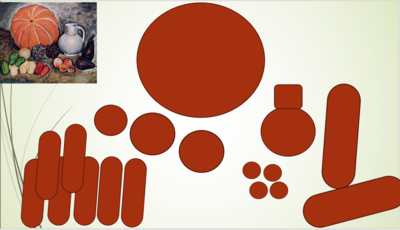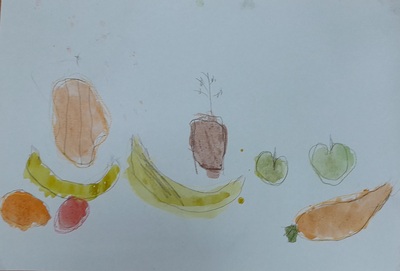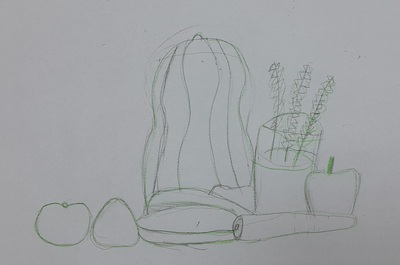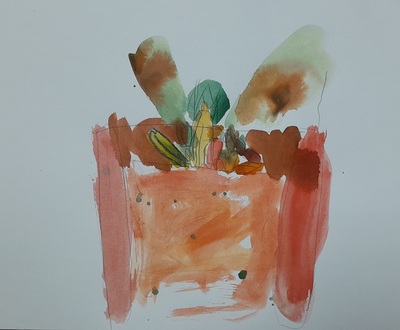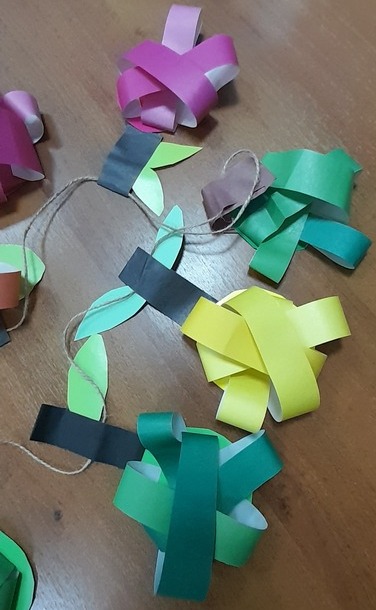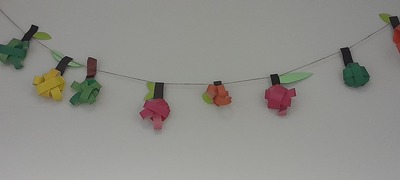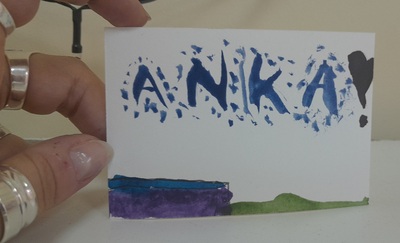
Let’s go alternative in April!
We did! In every possible way.
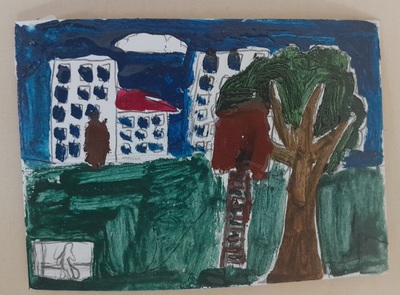
The size
This was the final lesson in our beautiful and exciting series of the Alternative April series. I really wanted to experiment with the size of the paper. Initially, I wanted us to paint something really big and then something really small in order to really experience the difference first hand. However, based on how the lesson with the older kids was going (in one word: too slow), I changed that for the lesson with the younger kids and opted for the A7 only. We were working well but the creative process, the decisions and the composition, takes time and I didn’t want to rush us and in the second lesson I decided to keep things simple: just the little picture.

The materials
Initially, I had the wild idea of letting the kids choose the medium that they want to work with. It is not a bad idea but, I will be honest, the preparations for its implementation need to be more detailed and organised in a slightly different way to what I did. Next time I will and next time will be better.
In the end, my older students went for the simplest and the most basic, pencils and black markers, and with my younger group I chose for all of us and we worked with watercolours.
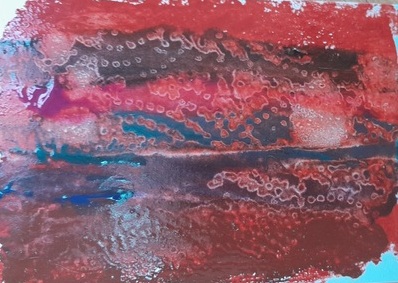
The artist of the day…
didn’t come. The first reason for that was that I did not want to choose one and I felt conflicted about it. On the one hand, I really wanted to stick to the framework that I created for our course and we had always had at least one Master to inspire us. On the other hand, the topic that I chose for the lesson, namely ‘Spring’, is such an open-ended and all-embracing topic, that looking for the one was a task doomed to a failure. Plus, I knew that the format would be enough of a challenge and I wanted to give the children the comfort of working with it. I was worried that I would be limiting them too much, with the artist, the format, the topic and the resource. I decided against it. We sang the song, said hello, brainstormed all the associations with the word ‘spring’ and looked very briefly at a selection of paintings showing spring, without singling anyone out.
And then sat down to work.
How it all went
I know that I sound like a broken record when I say it but I will do it again: This was one of my favourite lessons ever and the reason for that is that, again, we set off on an amazing, 45-minute creative journey.
- We all had to be very careful with choosing the topic for our work. The A7 format is a very small one and you have to take into account how small certain elements are and how much effort it would take to execute them.
- All kids had three pieces of the A7 paper, attached to the table with the painter’s scotch (necessary!) so they could experiment with different approaches and they really did. The first pictures were usually the most cautious ones, the easiest ones and the least experimentative. However, since there were more pieces available, I could see how much braver and more confident they became in their following steps. Even today, while looking at the pictures, I can tell the order in which they were painted by particular kids. And it is amazing. For example, the triptych in red by Egorka, who started with a scene from Mars, all in red, then moved on to a superhero’s portrait and finished with what he called ‘a zebra heart’, in black and red that ended up being a print. Why? Because he noticed that the paper towels we had on the tables had an interesting pattern and he decided to experiment. Precious.
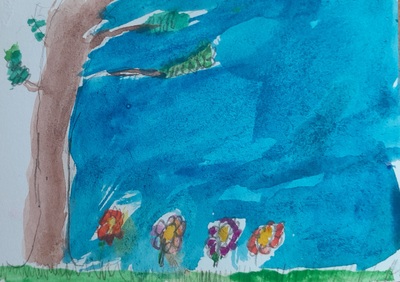
- Three of my students painted only one picture but it is because they decided to make it more detailed and, naturally, these required more time, effort and attention. The other children went for a triptych and, one way or another, these three were connected by a common theme.
- One of those three is the first in the world case of the Snail Art in which the artist traces the slime trail left on paper by her pet snail. Which, of course, was her own idea. No snails were harm in the production of this piece.
- It turned out that this kind of art is a perfect exercise for improving focus and concentration. It worked like magic. For that reason it might be an interesting activity to improve in the general English classes, for example. I can easily picture it in our ESL / EFL courses, especially that the topic can be easily adapted to match the curriculum and it does not eat up a large part of your lesson. And if you don’t want to get into the whole watercolour mess, the same can be done with markers or coloured pencils.
- For the time ever, I had not painted my picture before the lesson to show the kids. I wanted to experience the change of focus myself and I told them about it. This was also something that we did for the first time ever.
- Having three pieces of paper came in handy with one more thing. As soon as I announced the topic of our lesson, the same question was asked, almost immediately. ‘Can we paint something we want?’ I mean, I always say yes in the end and inside of me there is one happy teacher celebrating the independence and the artistic freedom that my little kids want to exercise. But we did negotiate a tiny little bit, too and, in the end, they agreed that since we have three bits of paper, a lot can be done. Something that the teacher suggests, something that we really, really want to do…
It is beyond fascinating how much impact the A7 format had on our art, composition and work. Five stars, highly recommended. I hope you enjoy visiting our little gallery in this post.

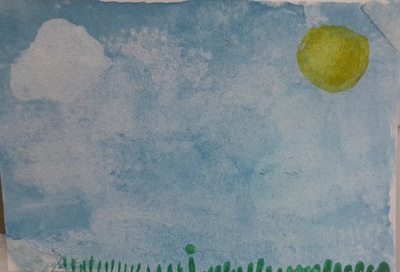


Happy teaching!
P.S. A request!
It is very simple.
I would like to know a tiny little bit more about my readers. There are so many of you, popping in here, again and again, and the numbers of visitors and visits are going up and make my heart sweel with joy. But I realised I don’t know anything about my readers and I would love to know, a tiny little bit more.
Hence the survey.

